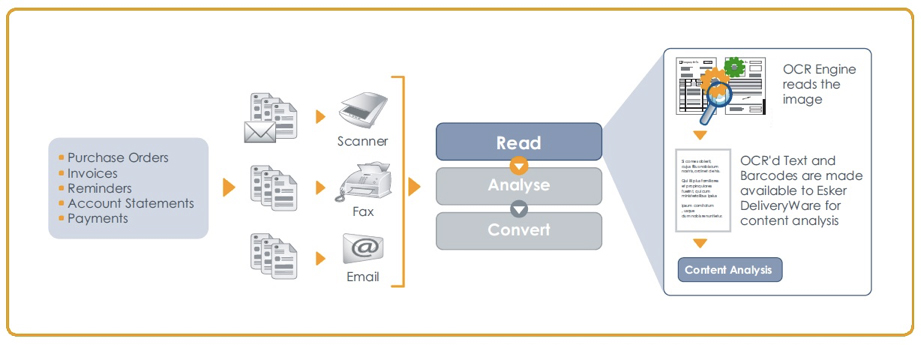A continuation of Part 1, this article covers the basics of document capture.
Document Capture Basics
What is it?
Relative to the different types of documents that enter an organisation in various formats and via different channels, document capture is the ability to automatically import different types of documents in different formats into a document management system.
This inbound document automation has its beginnings with inbound fax routing functionality. With the emergence of OCR technology, organisations have gained the ability use the content of inbound faxes by converting images to a “readable” format. Rules-based automation technology enabled routing and archiving of inbound documents arriving by fax. But recognizing and using information contained in the inbound faxes for processing documents such as sales orders was prohibitive, as it was necessary to define a business rule for each type of sales order.

Document sources
Business cycles that have a direct impact on a company’s performance involve processes that begin and end with a document. For example, the order-to-cash cycle starts with receiving a sales order and finishes with sending an invoice. Sales order documents reach a company via fax, email, mail (paper documents) or even by phone.
In the case of phone order processing, customer service staff enter orders directly into the customer order system, often after filling out a form. But if the document arrives by fax, email or mail, the customer service representative must manually enter the sales order information into the appropriate system. The process of managing such documents is inherently inefficient and labor-intensive, and carries considerable risk of errors and/or lost documents.
And the issue of documents in relation to business process efficiency improvement is here to stay — because the volume of documents received every day by companies is constantly increasing.
The types of documents a business typically receives fall into three general categories:
- Structured documents
- Semi-structured documents
- Unstructured documents
To put things into perspective, today 20% of incoming documents are structured documents while 80% are semi-structured and unstructured.